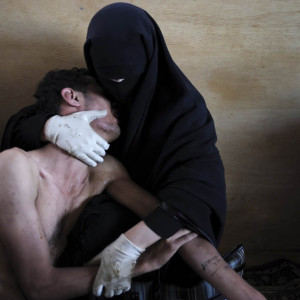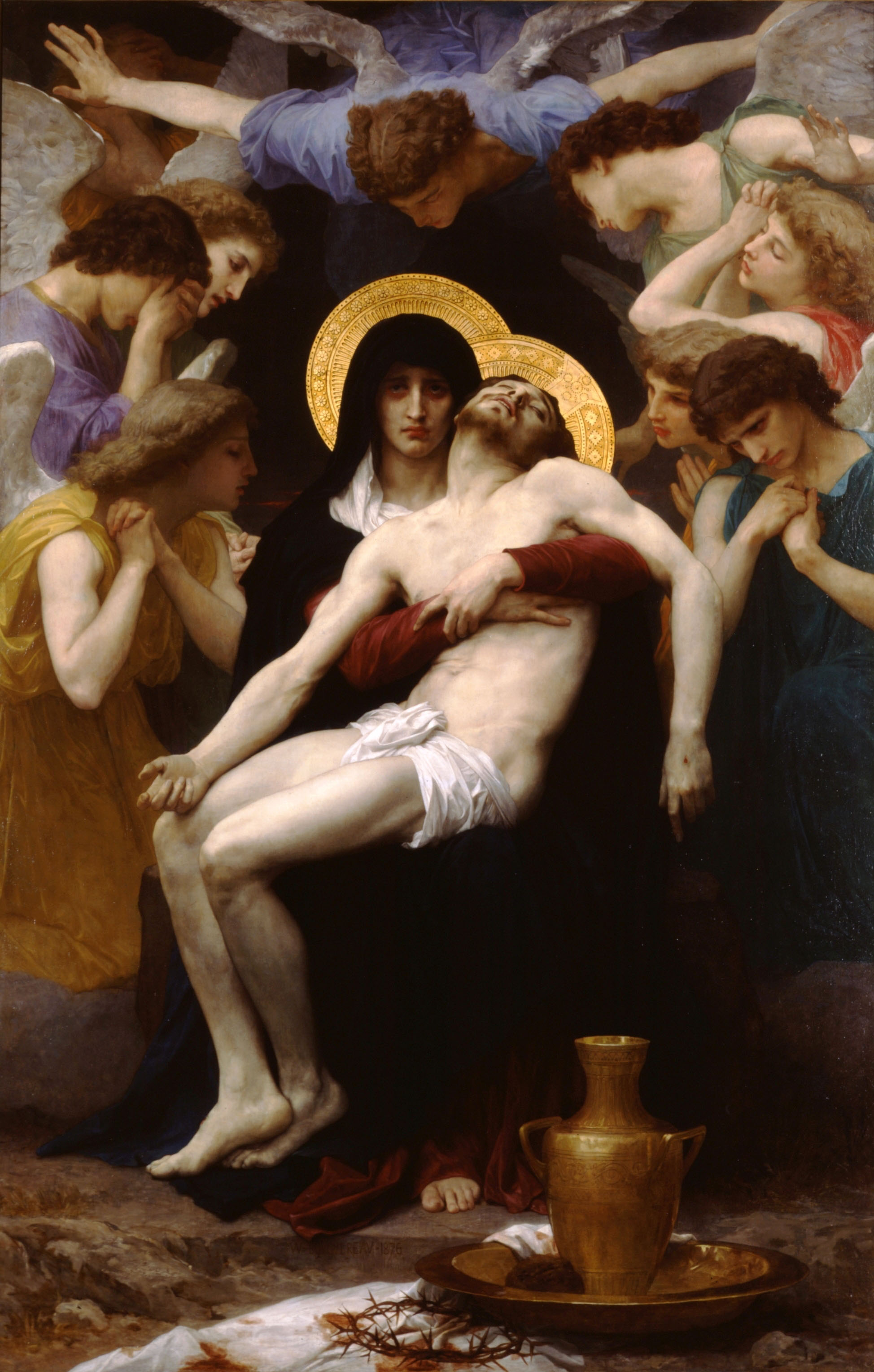The 2011 World Press Photo of the Year is this one, by Samuel Aranda:
The caption: “A woman hugs a wounded relative inside a mosque used as a hospital during clashes in Sana, Yemen on Oct. 15, 2011.” You can read more about why this photo was chosen from World Press Photo or the New York Times.
It’s hard to look at this photo and not think of the Pietà. While Michaelangelo’s is the most famous, in my opinion, the photo is actually closer to Luis de Morales’, or this one, an 1876 painting by William-Adolphe Bouguereau:
Both images are high-resolution, so feel free to click on them to make them larger. Personally, I’ve found the comparison between the two images fascinating, both in terms of what they depict in common, and in how they differ. That’s all I’ll say for now.



The most striking difference is the facelessness (/impersonality) vs. faces (/personality). But there’s something beautiful about even Islam trying to imitate Christianity (as it has somewhat sychronisticly done since the beginning). Now if only it would imitate virtue at a deeper level.
I’ve never seen the painting by Bouguereau in high resolution before. The expression on Our Lady’s face… heart-breaking :'(
The second is a priest who gave his all…that’s the image I had put on my ordination card. A great inspiration for lazy priests everywhere!
Joe, thanks for this and your many other thought-provoking posts. I’ve just tagged you on a book recommendation meme. It looks to me like you’ve read plenty, so perhaps you could share some of your wisdom with the blogosphere. Ave Maria, Anthony
Fr. Andrew,
I really appreciated your ordination card. At my old apartment, it was pinned to one of the walls.
Anthony,
Interesting. I probably won’t make a post of this, and I don’t own a Kindle, but perhaps I can just share three excellent Catholic books?
I’d go Introduction to the Devout Life by St. Francis De Sales, The Belief of Catholics by Msgr. Ronald Knox, and perhaps Catholicism by Fr. Robert Barron.
The reason is the same for all three: these are books that anyone can pick up, from a spiritual infant to a spiritual giant, and walk away enriched. These aren’t books that you read once in your life and check off your list. They’re the books that you can come back to, over and over, and draw out something new and beautiful each time. If it’s an exaggeration to say that anyone could pick these books up and gain from them, it’s only a slight one.
Honorary mentions to Europe and the Faith by Hilaire Belloc, Confessions by St. Augustine of Hippo, and Orthodoxy by G.K. Chesterton. These books are also fantastic, but I can at least see how people might not enjoy them, and can envision audiences that they might not appeal to.
I.X.,
Joe
P.S. I’m assuming the Bible doesn’t count as a possible Book pick, but of all the books Catholics should read more, it’s at the top of the list.
I can second “Introduction to the Devout Life.” It will change you.